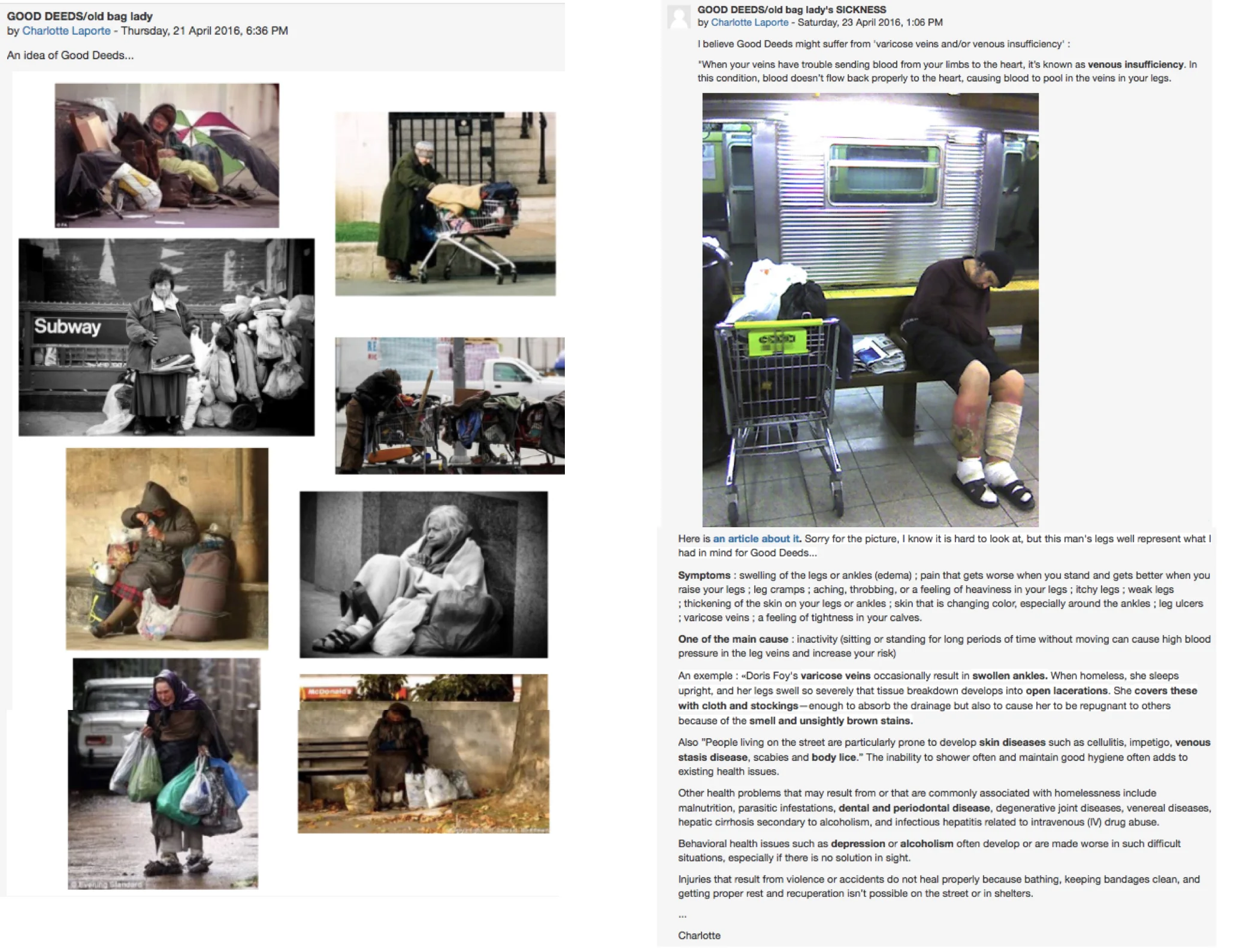EVERYMAN
USING VIRTUAL technologies To DEEPEN learners’ ARTISTIC INVOLVEMENT IN SCRIPTED PRODUCTION PROCESSES
Over recent years I’ve become especially interested in exploring how web platforms and emerging online digital technologies can enable actors-in-training to be more active artistic co-creators within theatre-making processes. I’d now like to focus on two specific theatre processes that I led for East 15 Acting School in 2016, as these best illustrate this practice: Carol Ann Duffy’s adaptation of Everyman and a devised Christmas show Fairytales Of New York. We’ll begin with Everyman.
Many of the characters within Carol Ann Duffy’s adaptation of Everyman are, on the page, quite abstract. For example, at the outset of his journey toward redemption, Everyman’s circle of friends are simply described as ‘Fellowship’, he encounters characters such as ‘Good Deeds’, ‘Knowledge’ and groups of characters given collective, abstract titles, such as ‘Goods’. An abstract can be quite unfulfilling for an actor to play. Whilst it was important that our actors should honour the dramatic function of each of these characters, it was equally important - to the acting company and to me, the director - that each of these characters possessed an existence, memories, desires and a soul.
The images below illustrate our early steps in achieving this. The first image is the home page of the online research sharing space that I created especially for the project. Each actor in the company was offered an ‘ideas sharing’ thread for each character whom they played. Next are examples of images and photographs that members of the ensemble shared to illustrate how they saw their different characters, inspired by a field trip to Shoreditch in East London and Selfridges department store in Oxford Street.
Images to illustrate two members of ‘Fellowship’, April, played by cast member Lisa, and DJ Venus, played by Rei (R). These character names were invented by Lisa and Rei and the characters were particular to this production.
Images shared by the actors playing ‘Goods’, inspired by their field trip to Selfridges, and a production shot from our show in which Everyman encounters ‘Goods’.
The image below is an example of how the company drew their character images together into digital mood board collages, in this case a collage created by the group of actors who played ‘Fellowship’. The ensemble then created a PDF containing mood board collages for each character, or character grouping. This PDF was then shared with the costume designer and the set designer, acting as a visual touchtone for a creative conversation between the ensemble, the costume designer, the set designer and myself. I’ve also included a production shot from the opening Fellowship sequence within the show, in which Everyman and his Fellowship are performing a raucous hip hop number, to backing music mixed live by DJ Venus in her DJ booth, a set item created especially for our show (she’s directly behind the actor playing Everyman in the photograph) .
The orthodox approach within theatre production processes is that the director and designer will meet, their conversations will then inspire a series of aesthetic choices that the acting company will be presented with on the first day of rehearsal and that they will work within thereafter. I’ve never been wholly comfortable with this approach. For example, a character’s costume isn’t merely about aesthetics, it impacts upon the way that the actor moves, it is inspired by the character’s experiences and it expresses the way that the character inhabits and survives within their world. If offered a set of specific but nurturing parameters, a structured way of expressing their ideas, and equipped with the character’s given circumstances, actors-in-training can often devise character-driven clothing and prop ideas that a creative team would perhaps have never otherwise considered. In my experience, production designers have not only been open to this approach, but have welcomed it.
Moreover, the shows that I have directed that have utilised web platforms and digital technologies to act as a conduit for ideas exchange between the acting company and the designer have possessed especially rich, detailed and nuanced visual aesthetics. The content below illustrates the significant impact that the Everyman company’s ‘character inspiration’ posts had on this production’s visual aesthetic. First, Lisa’s shares her ideas for the character ‘Knowledge’, and then Charlotte for her character ‘Good Deeds’.
A still from our production, in which Everyman encounters Knowledge.
A still from our production of ‘Everyman’, in which Good Deeds makes her entrance into the story.










